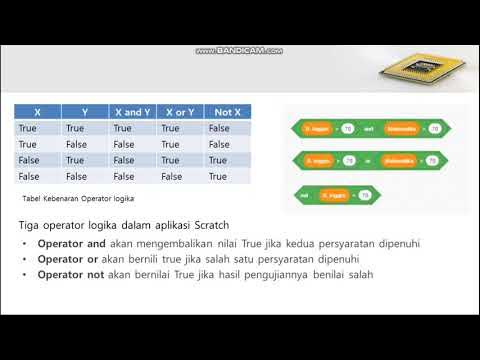CS101 2 Module 3 Relations and their Properties PART2
Summary
TLDRThis script discusses the properties of relations in sets of real numbers using the operators 'greater than', 'equals', and 'not equal to zero'. It explains how to determine if a relation is reflexive, symmetric, or transitive by examining all possible connections between elements. The script uses examples with real numbers to illustrate these concepts, showing that 'equals' is reflexive, symmetric, and transitive, while 'greater than' is transitive but not reflexive or symmetric, and 'not equal to zero' is neither reflexive nor transitive.
Takeaways
- 🔢 The script discusses the properties of relations on a set of real numbers using different operators: greater than, equal to, and 'a minus b not equal to zero'.
- 📊 To determine if a relation is reflexive, symmetric, or transitive, one must check all possible relations within the given set.
- 🔍 For the 'greater than' relation, the set {w, x, y, z} with values {12, pi, 3, 11} was used to illustrate the process of checking these properties.
- 🚫 The 'greater than' relation was found to be neither reflexive nor symmetric, but it was transitive.
- 🎯 To check for symmetry, the script emphasizes the need for a reciprocal path between elements, which was not present with the 'greater than' relation.
- ✅ The 'equal to' relation was demonstrated to be reflexive, symmetric, and transitive, as every element is equal to itself and no other elements are equal to each other.
- 🚷 The 'a minus b not equal to zero' relation was shown to be neither reflexive nor transitive, as it does not hold true for elements related to themselves or across all possible paths.
- 📚 The script suggests using a graphical representation to visualize and check the properties of relations, which can be especially helpful for complex sets or relations.
- 🧩 The concept of closure is important when checking for transitivity, as it involves ensuring all possible relations are considered to maintain the transitive property.
- 🔑 The script highlights that a relation is considered an equivalence relation if it is reflexive, symmetric, and transitive, which is a key concept in set theory and mathematics.
Q & A
What is the set of real numbers mentioned in the script?
-The set of real numbers mentioned consists of elements w, x, y, and z, with corresponding values 12, pi (π), 3, and 11.
What is the relation operator used in the first part of the script?
-The relation operator used is the 'greater than' (>) operator.
Is the 'greater than' relation reflexive for this set?
-No, the 'greater than' relation is not reflexive because no element is greater than itself, which is a requirement for reflexivity.
Is the 'greater than' relation symmetric for this set?
-No, the 'greater than' relation is not symmetric. If w > x, there is no case where x > w, which would be required for symmetry.
Is the 'greater than' relation transitive?
-Yes, the 'greater than' relation is transitive. For example, if w > x and x > y, then w > y, which satisfies the transitive property.
What happens when the relation operator is changed to the 'equal to' (==) operator?
-When the operator is 'equal to', the relation becomes reflexive, symmetric, and transitive, as each element is equal to itself, and equality holds reciprocally between elements.
Why is the 'equal to' relation reflexive?
-The 'equal to' relation is reflexive because each element is related to itself (e.g., w = w, x = x, etc.), fulfilling the requirement of reflexivity.
Why is the 'equal to' relation symmetric?
-The 'equal to' relation is symmetric because if w = w, then reversing the elements (w = w) results in the same relation. The same applies to other elements.
Why is the 'equal to' relation transitive?
-The 'equal to' relation is transitive because if w = w and w = w, it follows that w = w, meaning the relation holds for a chain of elements.
What is the significance of closure in determining transitivity?
-Closure is necessary to ensure all possible relations in the domain are accounted for. Without closure, it is difficult to identify whether transitivity holds, as not all possible relations are considered.
Outlines

このセクションは有料ユーザー限定です。 アクセスするには、アップグレードをお願いします。
今すぐアップグレードMindmap

このセクションは有料ユーザー限定です。 アクセスするには、アップグレードをお願いします。
今すぐアップグレードKeywords

このセクションは有料ユーザー限定です。 アクセスするには、アップグレードをお願いします。
今すぐアップグレードHighlights

このセクションは有料ユーザー限定です。 アクセスするには、アップグレードをお願いします。
今すぐアップグレードTranscripts

このセクションは有料ユーザー限定です。 アクセスするには、アップグレードをお願いします。
今すぐアップグレード関連動画をさらに表示
5.0 / 5 (0 votes)






